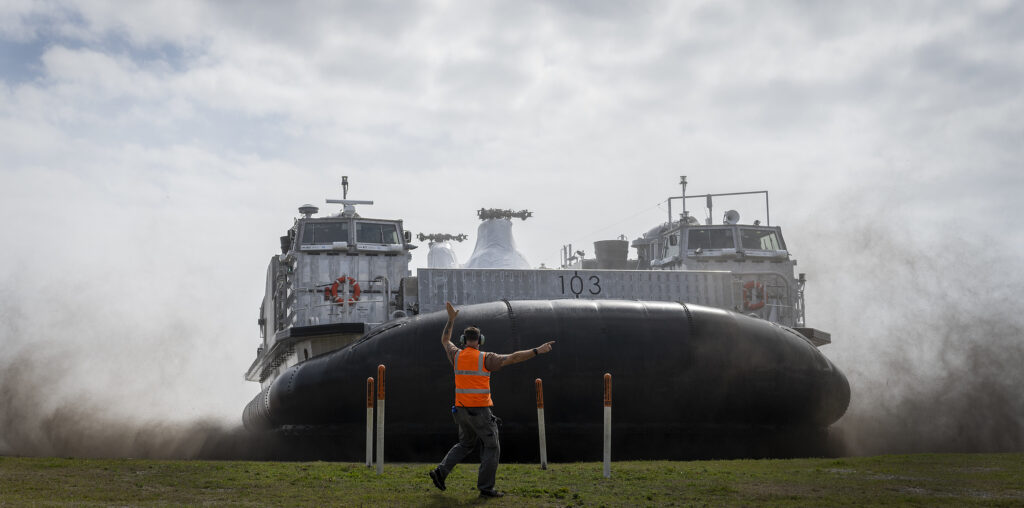
ARLINGTON, Va. — An unusual transport mission last month demonstrated the capabilities and versatility of the Navy’s new LCAC 100-class ship-to-shore connector.
The Air Force 96th Test Wing at Eglin Air Force Base, Florida, requested the assistance of the Naval Surface Warfare Center – Panama City Division to solve a problem in transporting a CH-46 helicopter from Naval Air Station Pensacola, Florida, to Eglin. The retired helicopter was to be used to “support future training operations for the Air Force Special Operations Command Special Tactics Training Squadron,” Jeremy Roman of the NSWC PCD public affairs office said in a March 23 release.
“With a height of nearly 17 feet, transporting the helicopter by land would have required extensive preparation work in order to lower the height to safely maneuver on public highways,” Roman said.
The 96th Test Wing and the NSWC PCD determined the best solution was using one of the LCAC 100-class ship-to-shore connectors, which recently entered fleet service, to transport the helicopter over the water to Eglin.
LCAC 103, the third production LCC 100-class SSC, was selected for the mission, conducted on Feb. 24.
“LCAC 103 transited from Panama City, Florida, to NAS Pensacola where the CH-46 was loaded and then transported to Eglin AFB,” Roman said. “The LCAC 103 then displayed its amphibious capability by transiting from water to shore at Eglin AFB where the CH-46 was rolled off the deck onto dry land. LCAC 103 further demonstrated the SSC amphibious capabilities by transiting across Santa Rosa Island at the Eglin AFB Test Range to navigate back to base via the most efficient route to NSWC PCD. This long-distance, land-hopping mission, supported post-delivery test and trials objectives by successfully gaining reliability growth hours while demonstrating required capabilities for Navy and Marine Corps expeditionary forces.”
“NSWC PCD is a Navy research, development, test and evaluation laboratory, and this mission displayed the fruit of the RDT&E and acquisition teamwork which is providing this critical expeditionary capability to the fleet. It is always a bonus when that capability supports our sister military branches and partners,” said Randy Whitehead, NSWC PCD Air Cushion Vehicle and Seabasing technical program manager, in the release.
“This was an excellent demonstration of key capabilities such as the LCAC’s unique combination of range, speed, amphibious versatility and lift capacity. It not only allowed us to successfully execute this mission but also showed how SSC can bring more to the table for future Distributed Maritime Operations.”
The LCAC 100-class SSC is built by Textron Systems and is replacing the older LCAC 01 class hovercraft in the fleet. Testing of the LCAC 100 craft is conducted at NSWC PCD. Recently, two LCAC 100s were delivered to the fleet’s Assault Craft Unit 4 at Little Creek, Virginia.






